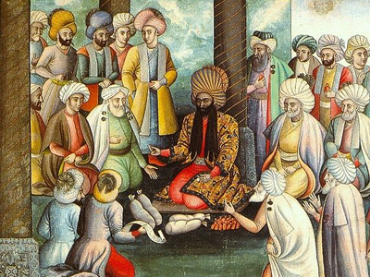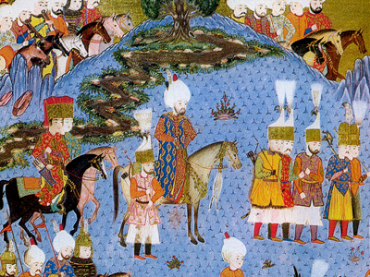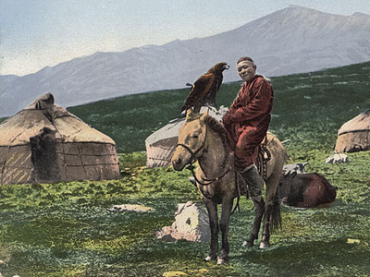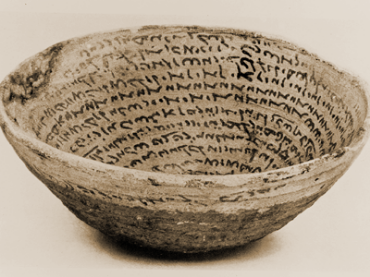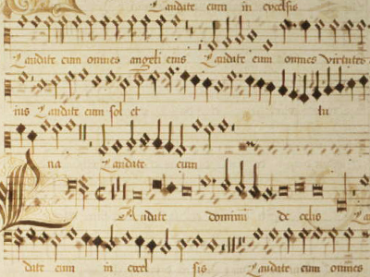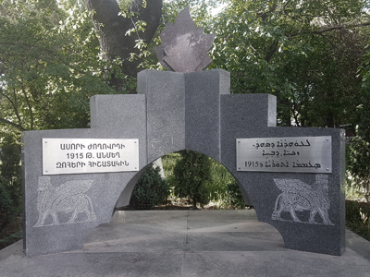History
The Spell of the Logos
Origen’s Exegetic Pedagogy in the Contemporary Debate regarding Logocentrism
Series: Gorgias Eastern Christian Studies 10
ISBN: 978-1-59333-698-1
Origen’s construal of the Bible as a textual incarnation of the Word encourages an assimilationist interpretation of the Hebrew Scriptures as a proto-Christian gospel. Although in partial agreement with this thesis, this study suggests a non-assimilationist reading of Origen’s biblical exegesis.
$241.00
Standing At Lyon
An Examination of the Martyrdom of Blandina of Lyon
ISBN: 978-1-59333-895-4
The suffering woman, Blandina, emerges as an archetypal figure of the martyrs of Lyon. This slave-woman ultimately arises to engage in battle with the powers of the Roman Empire. Through the application of Bowen Family Systems Theory and the writings of Michel Foucault the book explains the function of anxiety, and the dynamics at work in the system that result in the failure of Roman authority to use power to quell the rise of Christianity. The reactions of those who might appear to be the most powerful are essential in gifting power to this lowly slave.
$148.00
Self and Other
The Short Fiction of Yūsuf al-Shārūnī
Series: Gorgias Studies in the Modern Middle East 60
ISBN: 978-1-4632-0409-9
Self and Other explores the complex dynamic between the individual and the collectivity, narrative and identity that define the short fiction of Yūsuf al-Shārūnī, pioneer of Arab literary modernism. With a range of translated extracts, Kate V.M. Daniels offers English-speaking readers an invaluable introduction to one of Egypt's greatest short story-writers.
$157.00
The Women of Israel by Grace Aguilar
Two Volumes in One with a New Introduction and Commentary
Series: Judaism in Context 15
ISBN: 978-1-61719-626-3
For almost a century after it was first published in 1845 Grace Aguilar's Women of Israel was presented as a high school graduation gift and even as a Christmas present to employees. More than 150 years before the current proliferation of books on women in biblical narrative and biblical law, Aguilar offered brilliant and innovative interpretations of abiding value. She took for granted that her readers could read Hebrew and that they, like herself, knew the King James Bible from memory. The extensive introduction and notes will make this new edition once again accessible to laypersons, students, and scholars.
$346.00
Notables, Merchants, and Shaykhs of Southern Iran and Its Ports
Politics and Trade in the Persian Gulf, AD 1729-1789
Series: Conflict and Trade 5
ISBN: 978-1-59333-957-9
This book investigates the socio-cultural and maritime history of 18th century – early 19th-century Southern Iran and the Persian Gulf in terms of the merchants, mariners and captains who lived and died in the turbulent waters of the western Indian Ocean. This “uncertain frontier” between a revitalized Ottoman Empire to the west and an emergant British India to the east became a testing grounds for the communities of the Gulf. Generally assumed to be a period of anarchy, the 18th-century maritime peoples resolved differences by marriage, forged alliances, and adapted their mercantile skills to the emerging age of global power.
$197.00
The Archaeology of Cult in Middle Bronze Age Canaan
The Sacred Area at Tel Haror, Israel
By Jill Katz
Series: Gorgias Studies in the Ancient Near East 3
ISBN: 978-1-59333-791-9
What was Canaanite religion like during the Middle Bronze Age, at the time of the biblical patriarchs? This volume presents a theoretical model for identifying ritual behavior in the archaeological record, providing a test case using the rich material culture and structures that have been unearthed at the biblical city of Gerar (Tel Haror, Israel).
$149.00
A Bridge Over the Balkans
Demetra Vaka Brown and the Tradition of “Women’s Orients”
Series: Gorgias Ottoman Travelers 4
ISBN: 978-1-59333-655-4
This critical study of Demetra Vaka Brown, one of the most significant Greek American writers of the turn of the last century, is framed within the fields of “Orientalism” and cultural studies. At once a white female and a Greek immigrant from the Ottoman Empire, she worked as a writer in the United States, publishing in English and contributing her work to mainstream publications. The book presents the identity politics of Vaka Brown, recovering the discursive techniques in her identification processes and assessing the significance of her agency in the context of the themes and preoccupations of Orientalism.
$168.00
Christians under the Ottoman Turks
French and English Travellers in Greece and Anatolia (1615-1694)
Series: Gorgias Ottoman Travelers 2
ISBN: 978-1-59333-922-7
In the 17th century Britons left their country in vast numbers - explorers, diplomats, ecclesiastics, merchants, or simply “tourists.” Only the most intrepid ventured into the faraway lands of the Ottoman Empire. Their travel narratives, best-sellers in their day, provide an entertaining but also valuable testimony on the everyday life of Orthodox Christians and their coexistence with the Turks. Greek Christians, though living under the Ottoman yoke, enjoyed greater religious freedom than many of their brothers in Christian Europe. The travelers’ intellectual curiosity about Greece opened a window on the Orthodox Church, and paved the way for future dialogue.
$162.00
The Mark of Cain and the Jews
Augustine’s Theology of Jews and Judaism
ISBN: 978-1-59333-896-1
This book examines the development of Augustine of Hippo’s theology of the Jewish people and Judaism. Formulating a typological association between the biblical figure of Cain and the Jews, he crafts a highly intricate theology that justifies and even demands the continuing presence of Jews and their religious practices in a Christian society. Such a theology emerges out of his highly original interpretation of Genesis 4:1–15 and yet mirrors and theologically justifies the reality of Jews and Judaism in the late Roman Empire.
$136.00
Hearsay, History, and Heresy
Collected Essays on the Roman Republic by Richard E. Mitchell
Edited with an Introduction by Randall Howarth
ISBN: 978-1-59333-642-4
A collection of articles by Richard E. Mitchell presenting all the major historiographical problems scholars encounter in reconstructing the early Republic. Mitchell was one of the first scholars to question the practice of taking the broad outlines of the accounts handed down by Roman historians (writing hundreds of years later) at face value in writing modern accounts of the period.
$177.00
US Diplomatic Failures and the Arab-Israeli Conflict 1947-1967
With reference to final borders, Palestinian refugees and the status of Jerusalem
By Candace Karp
Series: Conflict and Trade 4
ISBN: 978-1-59333-273-0
The United States’ standing in the Middle East eroded as a result of its policy towards the Arab-Israeli conflict from 1947 to 1967, with Eisenhower’s “immediate deterrence” proving the lone exception. This period was especially critical as it introduced dynamics into the Middle Eastern balance of power that have proved particularly difficult to address. While the responsibility for seeking an end to conflict ultimately lies with the belligerents, the United States bears a heavy historical responsibility for the course of events and must now constitute the driving force behind a peaceful resolution of the dispute.
$193.00
Suryoye l-Suryoye
Ausgewählte Beiträge zur aramäischen Sprache, Geschichte und Kultur
Edited by Shabo Talay
Series: Bibliotheca Nisibinensis 1
ISBN: 978-1-59333-667-7
The present volume contains a collection of papers on different aspects of Aramaic linguistics, history and culture. These diverse papers are specifically intended for an informed Aramaic readership interested in raising awareness of their own culture. A fresh range of topics is therefore presented in this flagship volume of the series, offering a renewed vision of Aramaic and Syriac studies even for the specialists in the field.
$142.00
East and West
Essays on Byzantine and Arab Worlds in the Middle Ages
Series: Gorgias Eastern Christian Studies 15
ISBN: 978-1-60724-056-3
Twenty-four contributions on matters dealing with Byzantine and Oriental lands, people, and cultures through different perspectives, including history, maritime trade, documents, travelers, and art. These essays trace the history of the relations between the Greeks and the peoples of the Middle East from Late Antiquity up to the seventeenth century.
$202.00
Yours, Mine, or Theirs? Historical Observations on the Use, Collection and Sharing of Manuscripts in
Series: Analecta Gorgiana 126
ISBN: 978-1-60724-059-4
In the west centuries ago manuscripts were replaced by printed books, and relegated to mostly secular libraries as a result of religious and political upheavals. In the Christian Orient such changes were slower and remain less advanced. Manuscripts have not entirely vanished from regular use, and Christian communities retain ownership of significant collections of their historic manuscripts. The vital connection between manuscripts and religious culture endures, even if attenuated by persecution, diaspora, technology, and other aspects of modernity. This essay provides an historical survey of these issues in both Europe and the Christian Orient (limited here to the Middle East, the Caucasus, and Ethiopia/Eritrea).
$36.00
First Came Marriage
The Rabbinic Appropriation of Early Jewish Wedding Ritual
By Susan Marks
Series: Judaism in Context 13
ISBN: 978-1-59333-585-4
Ritual and historical perspectives each provide only a partial view of early Jewish weddings. Combining these approaches allows for a new look at practices rejected or highlighted by early rabbis and their successors, and First Came Marriage: The Rabbinic Appropriation of Early Jewish Wedding Ritual investigates the process by which early Jews married and the various moves they used to minimize, elaborate or codify these practices.
$150.00
Kassia the Nun in Context
The Religious Thought of a Ninth-Century Byzantine Monastic
By Kurt Sherry
Series: Gorgias Eastern Christian Studies 14
ISBN: 978-1-61143-969-4
Kassia the Nun offers a unique glimpse into ninth-century Byzantium in the only woman whose works were included in the corpus of liturgical hymns. This volume explores Kassia’s thought on Christology, on gender, and on monasticism itself. It provides readers with an opportunity to know this woman of remarkable intellect, wit, and piety by drawing primarily on her own words. Kassia’s is one of the only female voices from ninth-century Byzantium and this volume accordingly examines her reflections on gender in the context of her society and concludes that she represents a perspective that might be described as feminist.
$123.00
Lucullus, A Life
ISBN: 978-1-60724-078-5
While Lucullus is one of the great figures of the late Roman republic, his achievements have been overshadowed by a reputation for luxurious living. This book explodes the legend and restores Lucullus to his true position as soldier, politician and aesthete.
$168.00
Journey through the Crimea to Constantinople
By Elizabeth Craven; Introduction by Daniel O'Quinn
Series: Cultures in Dialogue: Second Series 1
ISBN: 978-1-60724-087-7
Written by one of the most scandalous figures in the beau monde and published just prior to the French Revolution, A Journey through the Crimea to Constantinople (1789) transported readers to the most exclusive courts of Russia and the Ottoman Empire.
$196.00
Another Mirror for Princes
The Public Image of the Ottoman Sultans and Its Reception
Series: Analecta Isisiana: Ottoman and Turkish Studies 104
ISBN: 978-1-60724-089-1
This book is a collection of essays on Ottoman history, focusing on how sultans of the Ottoman Empire were viewed by the public.
$157.00
From Mahmud Kaşgari to Evliya Çelebi
Studies in Middle Turkic and Ottoman Literatures
Series: Analecta Isisiana: Ottoman and Turkish Studies 103
ISBN: 978-1-60724-090-7
This volume of collected essays focuses on Middle Turkic and Ottoman literature.
$208.00
Dissent and Heterodoxy in the Late Ottoman Empire
Reformers, Babis and Baha'is
By Necati Alkan
ISBN: 978-1-60724-092-1
This monograph of the religious life of the late Ottoman Empire covers several significant features of the Turkish religious landscape. Indispensable for historians of Islamic breakaway religions, Alkan’s monograph fills a gap in many accounts of emergent religions.
$150.00
Doukas, un Historien Byzantin du 15e Siècle
Entre Grecs et Turcs
Series: Les Cahiers du Bosphore 51
ISBN: 978-1-60724-093-8
Djuneyd: Un personnage remuant de l'époque des Sultans Mehmed I et Mourad II Deux oracles concernant le règne de Michel VIII : Prédictions et prophéties vers la fin de l'Empire byzantin L'étendard de Mourad, conte historique Bayazid et Roxana, fiction historique Romain IV Diogène à Manzikert.
$120.00
The Byzantine Rite
Series: Analecta Gorgiana 136
ISBN: 978-1-60724-099-0
In his classic introduction to Byzantine Orthodox liturgies, King examines the liturgies of the Oriental Orthodox churches. In this volume the Byzantine rite is considered. The rite is described and given a context in the setting of its native church.
$92.00
The Christian Heritage of Iraq
Collected papers from the Christianity of Iraq I-V Seminar Days
Edited by Erica C. D. Hunter
Series: Gorgias Eastern Christian Studies 13
ISBN: 978-1-60724-111-9
Iraq has been a centre of Syriac Christianity for almost two thousand years. This volume of collected papers from the Christianity in Iraq I-V Seminar Days (2004-2008) explores the Christian heritage of Iraq, highlighting the churches’ innate ability to transcend barriers of language, culture, ethnicity and religion.
$193.00
Marcion, or Christianity Without History
The Gospel History and Its Transmission
Series: Analecta Gorgiana 152
ISBN: 978-1-60724-121-8
Originally delivered as one of the Jowett Lectures for 1906, the contents of this booklet emerged during the first quest for the historical Jesus. Somewhat surprisingly, Burkitt discovered that historical criticism increased the historical credibility of the Synoptic Gospels in his estimation. This eighth lecture in the series addresses Marcion. Burkitt focuses on how this early Christian thinker remained ahead of his time while also falling out of the mainstream of what was an emerging Christianity.
$39.00
Filter by
Filter by price
Filter by manufacturer

